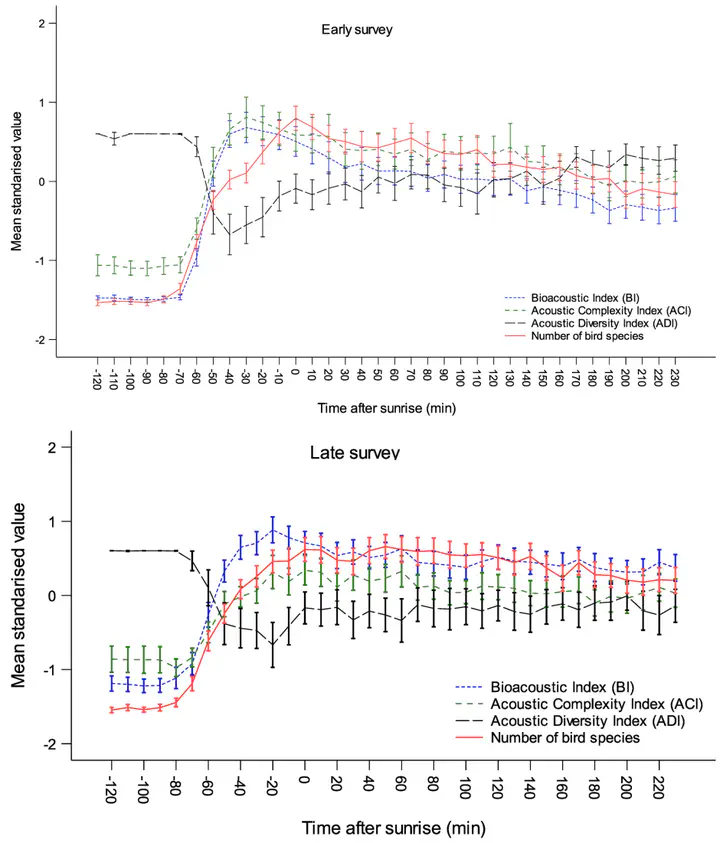Acoustic indices estimate breeding bird species richness with daily and seasonally variable effectiveness in lowland temperate Białowieża forest
 Budka et al. 2023
Budka et al. 2023Abstract
Acoustic indices have been proposed as rapid and easy to apply tool for biodiversity estimation of vocalising animals without the need for individual species identification. However, inconclusive, or even opposite dependencies between acoustic indices and animal biodiversity found in various studies suggest that their effectiveness is environmentally variable. Here we examined how three acoustic indices; Bioacoustic Index (BI), Acoustic Complexity Index (ACI) and Acoustic Diversity Index (ADI) predict bird species richness in a species-rich, lowland temperate forest in Europe – the Białowieża Forest. We recorded soundscape in early and late spring at 84 recording points. We analysed 72 1-min sound samples collected per recording point to evaluate how well acoustic indices predict bird species richness from the perspective of a single sound sample, survey and recording point and how they follow the daily pattern of singing activity. When we compared the values of acoustic indices with the number of bird species detected manually in 1-min sound samples, we found BI to best predict the bird species richness, independently of time in the season but variably across the day, while ACI and ADI showed weaker dependency, variable both seasonally and daily. The correlation between each index and number of bird species was stronger in the early part of the season. Averaged by survey or recording point, the acoustic indices correlated more strongly with the mean compared to the total bird species richness, and provided better estimation of bird biodiversity in the early than the late survey. At the level of the recording point, BI correlated most strongly with mean bird species richness (rho = 0.584), while ADI correlated most strongly with total bird species richness (rho = -0.347). Acoustic indices followed daily bird activity pattern, yet they provided greater values before the peak of the species richness estimated by manual spectrogram scanning and listening to recordings. In this study acoustic indices correlated moderately to strongly with the bird species richness, providing a useful tool for rapid estimation of bird biodiversity in temperate forests. However, daily and seasonal variation in effectiveness of acoustic indices should be taken into account in the analysis. Using the mean instead of the total number of bird species in comparisons improved the effectiveness of indices but measured different aspects of biodiversity.